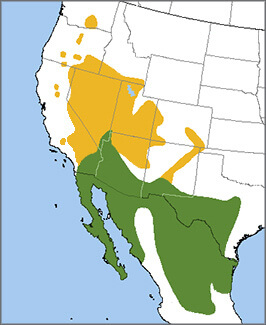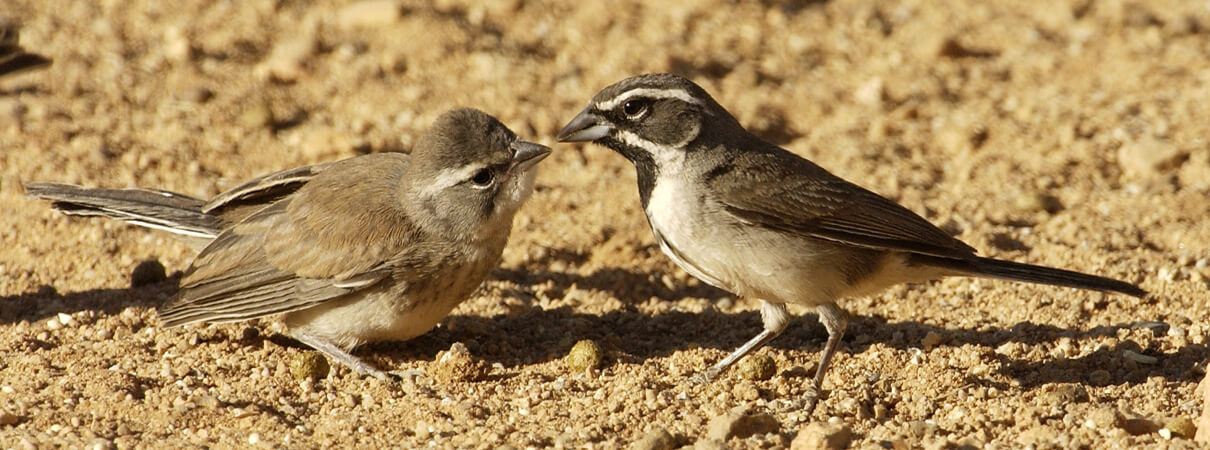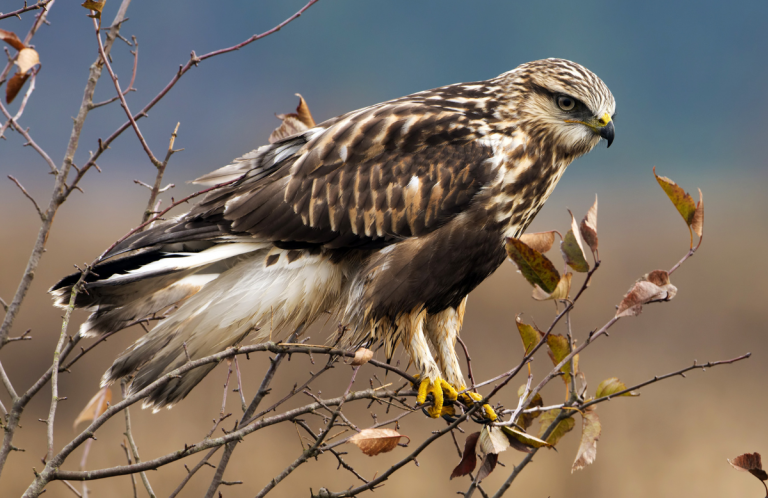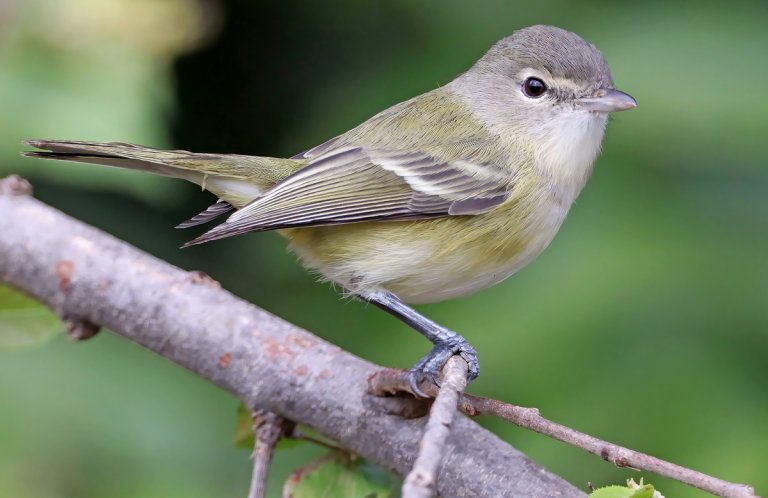 The handsome Black-throated Sparrow, also known as the Desert Sparrow, is most often found on dry desert hillsides and salt flats of the American Southwest, while some birds also migrate to or live year-round in Mexico. Its sweet song, a mix of tinkling notes and musical trills, is one of the characteristic sounds of this inhospitable landscape.
The handsome Black-throated Sparrow, also known as the Desert Sparrow, is most often found on dry desert hillsides and salt flats of the American Southwest, while some birds also migrate to or live year-round in Mexico. Its sweet song, a mix of tinkling notes and musical trills, is one of the characteristic sounds of this inhospitable landscape.
Like other desert species such as Greater Roadrunner and Cactus Wren, the Black-throated Sparrow can survive long periods without water, getting the moisture it needs from its food. Extra-efficient kidneys also help these birds retain water in their bodies.
Although well-adapted to desert conditions, the Black-throated Sparrow does not do well in suburban environments. The species has declined in areas with increased human development, where its ground-nesting habits make it vulnerable to cat predation; the nests are also sometimes parasitized by cowbirds. Pesticide use and hotter, more frequent brush fires ― caused by a combination of climate change and current fire management practices ― have reduced habitat quality throughout the bird's range.
Winter Socialite
Nine subspecies of Black-throated Sparrow are recognized, three on islands in the Gulf of California. (Several of these subspecies may be separate species, but further study is needed.) Only three of these nine subspecies are migratory, and those are short-distance migrants.
During the winter, Black-throated Sparrows gather in mixed-species flocks alongside Sagebrush Sparrows, Brewer's Sparrows, and White-crowned Sparrows.
Sign up for ABC's eNews to learn how you can help protect birds
Just the Right Timing
Black-throated Sparrows forage actively on the ground and in low vegetation in search of seeds and insects. They will even pursue insects in flight.
The timing of this sparrow's breeding season is determined by food availability and the onset of midsummer rains. Second broods are common, especially in years of plentiful rainfall.Male Black-throated Sparrows initially establish a large territory and defend it aggressively. Once nest-building and egg-laying are complete, the birds are less likely to drive out intruders, and territory boundaries shrink.

Black-throated Sparrow and young by Owen Deutsch
Young Black-throated Sparrows are fed by their parents for several weeks after fledging, then stay in family groups until flocks of young birds begin to form in late summer. Juveniles are streaked and lack the bold facial pattern of adult birds.
Sparrow of the Sage
Although it's still relatively common is some areas, many Black-throated Sparrow populations have shown long-term declines due to habitat loss and degradation. Between 1966 and 2014, the species has undergone a cumulative decline of 54 percent across its range, according to the North American Breeding Bird Survey.
As with all birds, habitat is home. Black-throated Sparrows prefer desert shrubland, a plant community that may include big sagebrush — the dominant shrub species over large areas of the Great Basin. The imperiled Greater Sage-Grouse and an entire wildlife community relies on healthy sagebrush.
Unfortunately, the U.S. Department of the Interior has announced a proposal to substantially alter existing conservation plans for sage habitat across 10 states. These hard-won plans were developed by stakeholders across the West, and many oppose weakening them.
Donate to support ABC's conservation mission!



















































